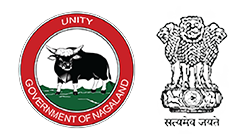The ongoing wave of COVID-19 is slowly infection children below 18 years although not severe. However, with new variants of the Virus one cannot estimate the severity of the infection in the coming days. Till a vaccine is developed for children below 18 years of age parents should take all the COVID-19 precautionary measures for their children. Here are some steps for parents/ care giver to prevent and manage COVID-19 in Children
- What should parents/ Care giver do?
- Teach children more than 2 years to wash hand with soap and water for 20 second, maintain distance of 6 feet from others and limit in-person playtime.
- Continue Breastfeeding of Children under 2 years by following COVID appropriate Behaviour
- If child is more than 5 years, teach them to always wear mask while going out.
- Clean commonly touched places, toys at least once a day with 1% sodium hypochlorite.
- Engage child in indoor physical and learning activities as much as possible.
- When to suspect COVID in Children?
Symptoms are similar in adults and children- Fever or Chills, cough, Nasal congestion or running nose, loss of taste or smell, shortness of breath or difficulty in breathing, diarrhea and poor appetite.
- Take extra care if your child has any of the following.
- Malnutrition, disability, Conditions such as HIV, underlying cardiac, liver, kidney problem.
- Who can be treated at home Isolation?
- Asymptomatic or children with mild symptoms like sore throat; cough can be managed at home.
- Care of children under home isolation.
- Don’t panic, majority of cases can be easily managed at home if detected early.
- Inform ASHA/other functionaries in your areas.
- Keep the child in a well- ventilated room.
- Children less than 5 years should be accompanied by mother or caretaker during isolation.
- If home isolation is not possible take the child to the nearest COVID Care Centre.
- Monitor the child by:
- Counting respiratory rate 2-3 times a day.
- Looking for chest in drawing.
- Looking for bluish discoloration of skin.
- Checking body parts to ascertain if it is extremely cold.
- Checking Oxygen saturation and body temperature 4th hourly.
- Fluid intake in 24 hours. Feeding intake and maintaining feeding chart
- Activity level
- Symptomatic Management of Home isolated children
- For Fever: Paracetamol 10-15mg/kg/dose can be given in 4-6 hours interval.
- For Cough: In older children gargle with salt water can be performed.
- Fluid & Feeds: Ensure oral fluid to maintain hydration.
- Antibiotics: Not indicated
- What should be done if there is a sick adult at home?
- Self –isolate in a room with adequate ventilation.
- Stay as far as possible from children.
- Always wear triple ply mask or N95.
- Use separate dish, towels etc and clean separately.
- Self –monitor for danger signs, socialize with friends and family through phone or video calls.
- Take plenty of fluids.
- Consult doctor immediately if any of the following is present.
- Respiratory rate more than-
≥60/min in children 0-2 months of age.
≥50/min in children 2-12 months of age.
≥ 40/min in children 1-5 years of age.
≥ 30/min in children > 5 years of age.
- Urine output less than 0.5 to 1.5 cc/ kg/hour
- Oxygen saturation below 94%
- Temperature more than 100.4 F
- Inadequate feeding / fluid intake.
- Physically inactive.
- Chest in drawing, cold extremities, bluish discoloration of body.
- Skin rashes, redness & Swelling of lips, tongue, hand & feet.
- In case of moderate or severe symptoms :
Children with rapid breathing/ difficulty breathing/ SPO2<94 should, be referred immediately to the nearest Dedicated COVID Health centre or secondary hospital after consulting with the nearest Hospital.
Always consult a medical practitioner before any medicine is administered.
For more information call toll free- 1800-345-0019/ National- 1705
If there are symptoms of COVID19, get tested. After negative self test, if symptoms still persist, get confirmatory test done through RT-PCR or TruNat
Always follow the precautionary measures of Wear a Mask, Washing Hands Frequently, Maintaining Social Distance and do not go out of the house un-necessarily.
Source: Department of Health & Family Welfare, Government of Nagaland
(DIPR)

